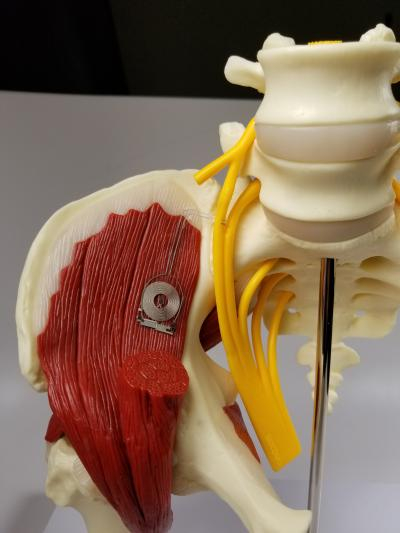
Image: courtesy of Northwestern University via AFP Relaxnews
Researchers at Northwestern University and Washington University School of Medicine have developed an implant no larger than a dime and as thin as a sheet of paper that uses pulses of electricity to stimulate the regeneration of nerves.
This bioelectric medical device was tested in rats with damaged nerves in their legs. After fitting the implant, electrical pulses were administered to the damaged nerves. In a study published in the journal, “Nature Medicine,” the researchers explain that the implant is powered and controlled wirelessly via an external transmitter located outside of the body.
The device was tested in several rats, which received one hour of electrical stimulation for one, three or six days. Others received no electrical stimulation at all. The researchers monitored their recovery over a period of 10 weeks. As a result, they found that electrical stimulation sped up the process of nerve regeneration. Moreover, nerve signaling and muscle strength were recovered more quickly and thoroughly, the more days of treatment the rats received.
Note that the implant is also biodegradable, working for around two weeks before absorbing into the body. The scientists found no adverse effects relating to the device or its reabsorption.
The researchers’ findings also highlight other potential uses, including as a pacemaker. Although these new-generation devices have not been tested in humans, the scientists hope that this kind of “bioelectric medicine” could complement or one day even replace certain medical treatments or permanent implants. JB
RELATED STORIES:
Size matters: Infertile men have shorter penises, study suggests
New study advises storing insulin with a thermometer